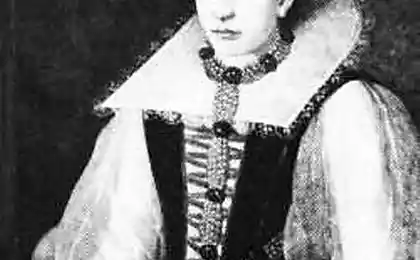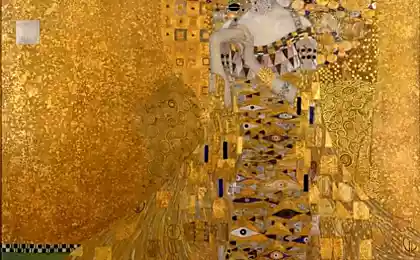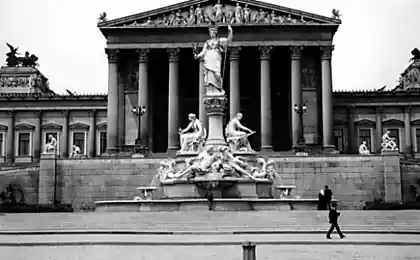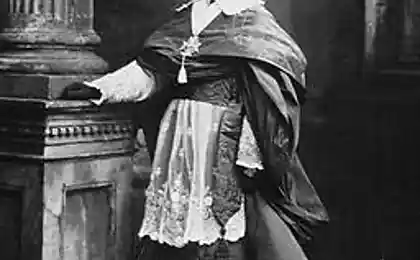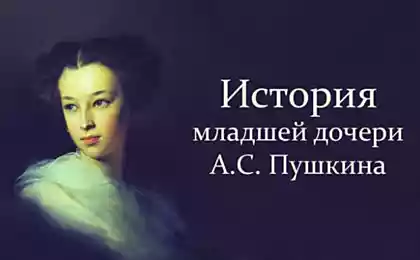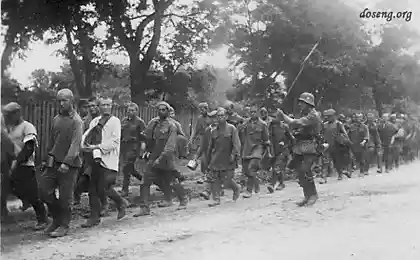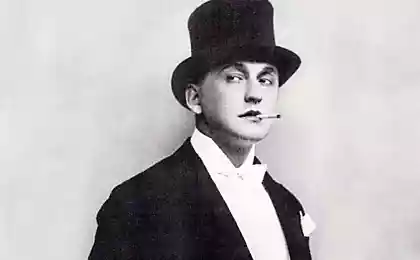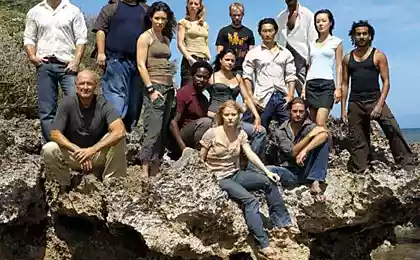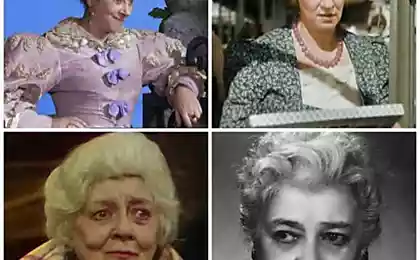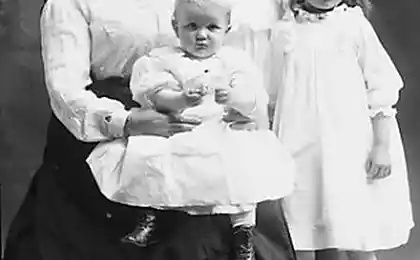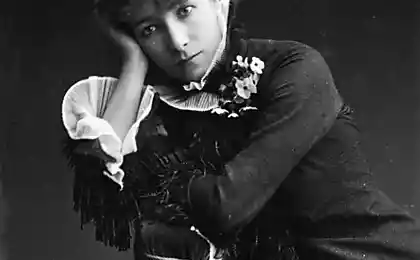656
Maria Kapnist is the countess of the Gulag.
An unusual, at first glance memorable image. Skinny, deep wrinkles, burning eyes, predatory nose - the ideal type for the role of evil old women and insidious witches.
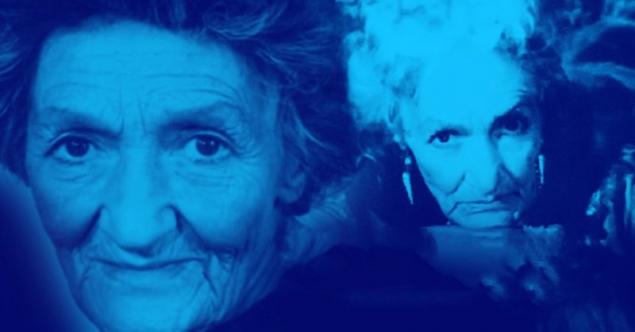
Few people know that Maria Kapnist’s appearance is a visual result of 15 years of hard labor in the Gulag, that her whole fate is almost from the first to the last steps – a severe ordeal, torture and torture.
Maria Kapnist Kapnisty (Kapnissi) is a Greek genus originating from the island of Zante (now it is the island of Zante). zakynthos). Glory representatives of this family gained at the Venetian service, and in 1702 the Doge of Venice Alvise II Mocenigo granted Stomatello Capnisi the count title.

Stomatello's grandson, Peter Khristoforovich fought with the Turks on the side of the Russian Emperor Peter I, settled in Ukraine and soon died. His son Vasily also became a military colonel of the Mirgorod regiment and a foreman, and he wrote his surname as Kapnist. He became famous in the battles near Ochakov in 1737.
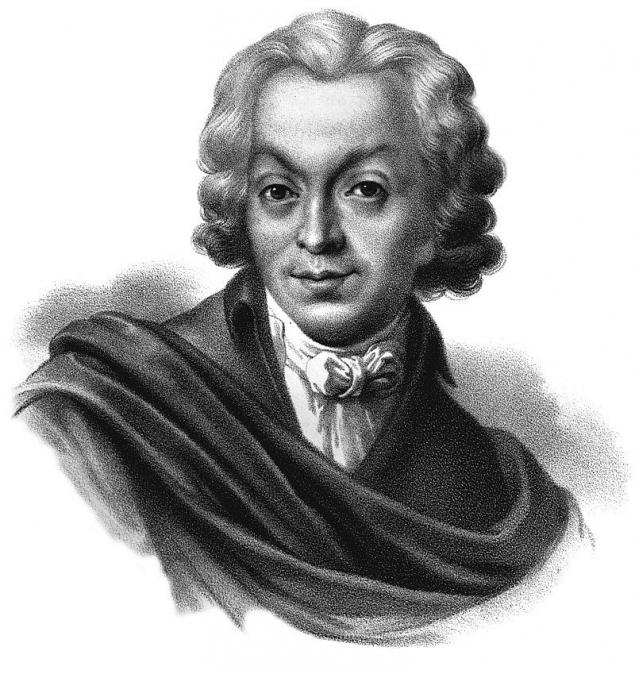
All Kapnists adequately corresponded to the motto on their family coat of arms: "In the fire, unshakable." Among them were the commanders of the Cossack troops, Decembrists, public figures, and Vasily Kapnyst went down in history as a great poet and playwright.
On the maternal side, Maria Rostislavovna is genetically related to the most famous genera: the Apostles, the Golenishchev-Kutuzovs, the famous Zaporozhye ataman Ivan Sirko and the Ukrainian hetman Polubotsky.
Childhood and youth Maria Rostislavovna Kapnist She was born on March 22, 1914. The beginning of her life was the envy of everyone. Father Rostislav Rostislavovich Kapnist is a count, a rich man, a prominent figure.
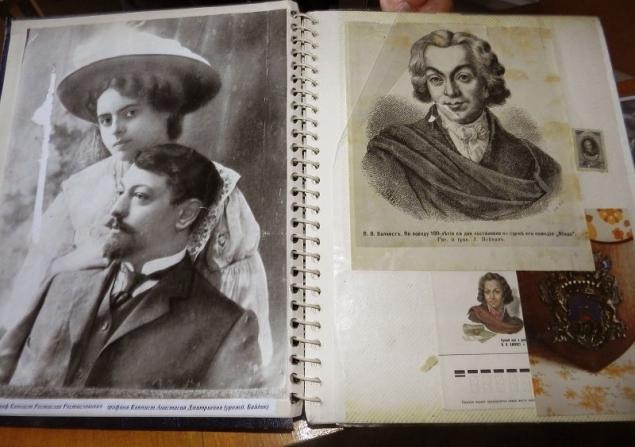
Mother Anastasia Dmitrievna, née Baydak, is a noble, beautiful woman who knew 18 languages! A luxurious mansion on the English Embankment in St. Petersburg, Fyodor Ivanovich Chaliapin himself is a family friend and a devoted mother admirer.
617862
Chaliapin first drew attention to the young Mirochka (what was the name of Maria Rostislavovna relatives and friends). He gave her vocal lessons and praised her first stage work in a home play. It seemed that life would be so measured and happy always.
Everything collapsed in 1917. Living in St. Petersburg became increasingly difficult, and the Kapnists moved to Sudak. Rostislav Kapnista in the winter of 1921 shot the punitive detachment of the Cheka.
Lisa, Maria's older sister, did not survive the death of her father - she died of a heart break. Anastasia Dmitrievna and other children hid in the ravines, the mansion was looted and destroyed.
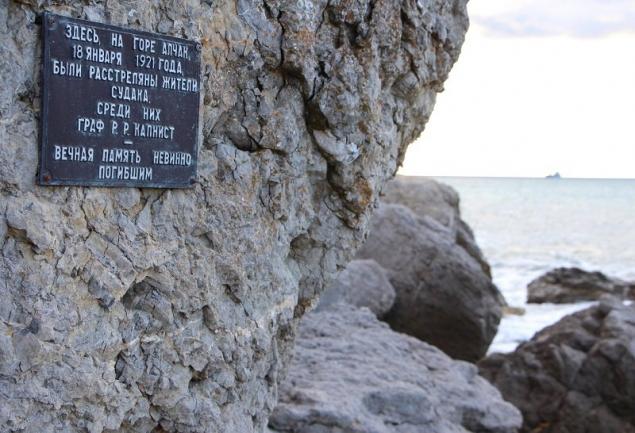
A few years later, the Red Terror spread to the surviving family members. Crimean Tatars, who highly venerated Count Kapnist, helped his widow and daughter Masha escape from Sudak, providing them with national clothes. At the age of sixteen, Maria Kapnist returned to St. Petersburg (now Leningrad).
The patron of the mother was Sergey Mironovich Kirov. Mother gets a job, daughter gets an opportunity to learn. So Maria ends up in a theater studio. In Leningrad, she meets a former admirer of Lisa, an older sister, electrical engineer Georgy Kholodovsky, familiar from Sudak. An affair begins...
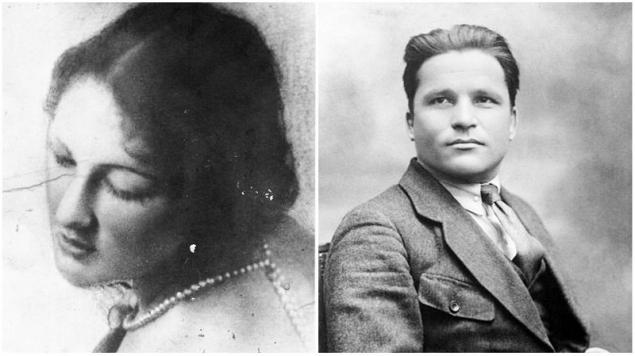
In December 1934, shots were fired at Smolny: Kirov was killed. There are rampant arrests in town. Fate first throws Maria Kapnist to Kiev, then to Batumi. And here's the first arrest: August 27, 1941, sentence - 8 years of camps. A real hell has begun...
Arrested as an “unreliable element” (as it was of a noble family), Kapnist went through many of the most terrible camps for 15 years: from the hot sands of Karaganda to the frozen steppes of Taishet.
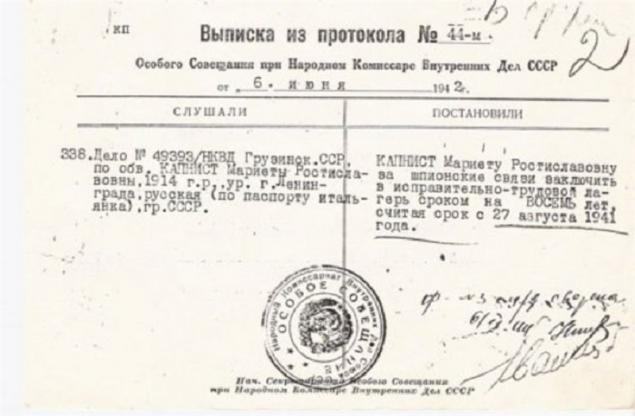
The Gulag is not the castle of If. It's hard labor. It's hunger. It's humiliation. Every day she was lowered in a barrel in a coal mine for 60 meters. But neither the daily grueling work, nor the constant beatings, nor the harassment of the camp commander, broke her will.
She later recalled, "Stages, transfers, camps." They never told me where they were going, so they asked themselves. Forever in memory the stage from the Karaganda camp in Dzhezkazgan. Desert. Scorching sun. Strong wind with sand. People died like flies. Everyone was thirsty. Dzhezkazgan was almost the most terrible place. Coal mining. In the morning they went down to the mine, climbed at night. The hands and leg suffered unbearably.”
To survive in these terrible conditions Maria Rostislavovna helped her heart friend Georgy Kholodovsky. Wherever she was, he found her and sent parcels of breadcrumbs, dried fruit, onions, saving her from hunger and scurvy.
And every year on her birthday, March 22, the old Russian holiday - Lark Day, she received her traditional, beloved from childhood gift - larks baked from pastry.
When the guards learned of the prisoner’s pregnancy, they were forced to have an abortion. Mary flatly refused. Bullying was pouring in. She had her teeth knocked out so she wouldn't bite. Doused with cold water and left in the cold. But nothing helped – in 1950 in the camp, Maria Kapnist gave birth to a daughter Radislava.
Who became her father remained a mystery. Having given birth to a child, Maria received no favors from the guards. On the contrary, the situation has worsened. I had to work harder. Already on the settlement had to load heavy boxes, posing as a man. One day she could not stand it and lost consciousness. After that, Mary made life easier. Rada was assigned to kindergarten.
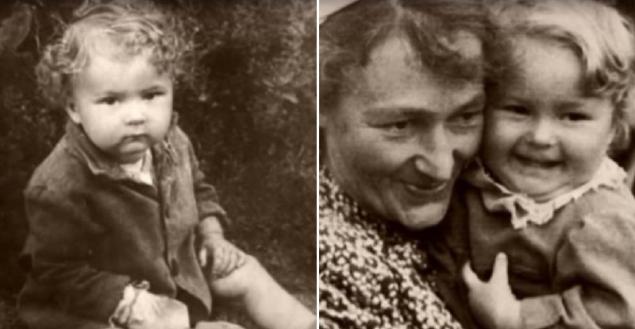
The long-awaited and suffering daughter Mary protected as best she could. And the second term - ten years - was for hitting a kindergarten teacher who abused her two-year-old child. Meanwhile, the little Rada was sent to the Krasnoyarsk orphanage.
Kapnist was in a new prison and there went on a hunger strike, demanding that she give the child. She endlessly sent inquiries about her daughter's whereabouts, but each time she was taken to another camp.
To survive Maria helped friendship with Valentina Ivanovna Bazavluk, which she met in one of the camps. The friends agreed that which of them will be released first, she will find Radislava.
In 1956, Maria Kapnist found freedom. George Evgenievich met her with a beautiful bouquet at the station. I didn't. She was 44 years old and looked like an old woman.
The scene was terrible, tragic. He and she rushed along the already empty platform, in the end Kholodovsky handed Maria Kapnist a bouquet with the words: “You were not met, and I did not meet the one I was waiting for.” Turned around, walked away. Maria Rostislavovna called him. It was a shock...
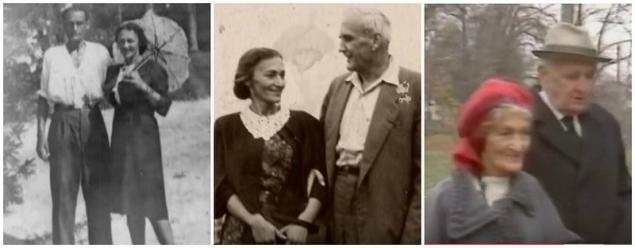
George simply did not recognize the wrinkled gray-haired woman as his Mary, the Mary to whom he sent parcels every month for so many years, trying to somehow ease the camp life. His expression, when he finally realized who was in front of him, Maria Rostislavovna remembered for life. They remained friends, but nothing more.
The daughter, whom Valentina Ivanovna found and took to her, did not accept her mother. I didn’t know why my mom wasn’t there so long. She already had a mother, Valentina Ivanovna.
In a moment of despair, Maria Rostislavovna once wrote: “I experienced such terrible camps, but I experienced more terrible torture when I met my daughter, who did not want to recognize me.”
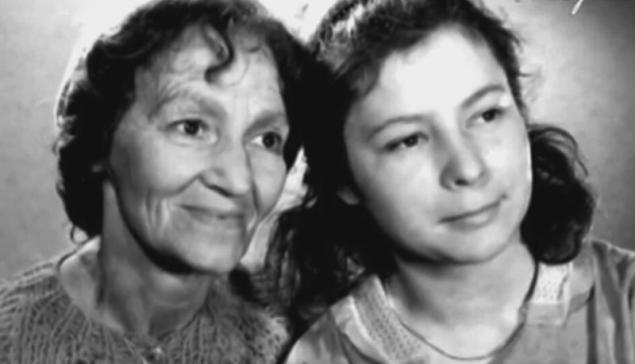
There was a warming between the mother and daughter. Rada said: The first time I came to my mother, when I was 15 years old, and was on her birthday. It was there that I first felt what kind of person she was, how people loved her.
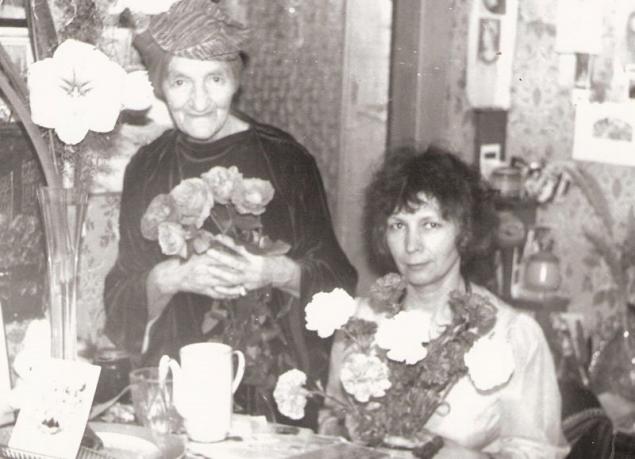
There was an extraordinary atmosphere that she created. She always had a lot of people of different ages and professions. As soon as she came in, it was as if a fresh wind were flying in and an amazing conversation began.
After 15 years of camps and transfers, Maria Kapnist arrived in Kiev. Life had to start from scratch. There was nowhere to live, and she spent the night in train stations, in squares, telephone booths. To get at least some money, she worked as a masseur, a janitor. About the scene and filming in the cinema I did not even dream.
After the camp ordeal, Maria Rostislavovna in her 44 years looked at all 70. This helped her get her first role. She was standing in a casket near the box office of the Dovzhenko cinema, a young director Yuri Lysenko ran up and with the words: “What film do you star in?” – dragged the picture “Tavria” to the set.
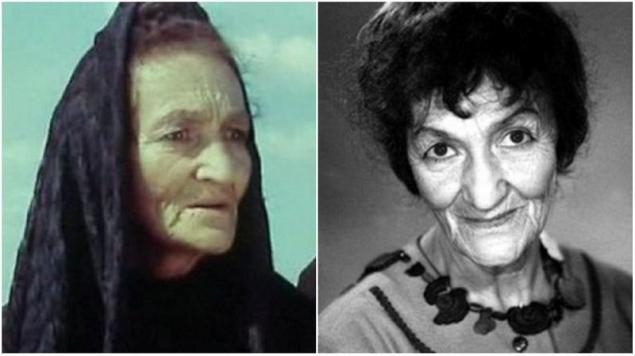
The success of this debut work drew the attention of many directors of the Dovzhenko film studio. They were delighted with her expressive appearance and filled with offers to play aristocrats, nuns, witches. Predatory profile, arrogant look and old-fashioned manners - all this invariably caught the viewer's eye.

Later she became known for her characteristic images - countesses, ladies, mysterious old women, gypsies and sorcerers. In "The New Adventures of the Yankees at the Court of King Arthur", she generally performed three roles at once - Fatum, a knight and an abbess.
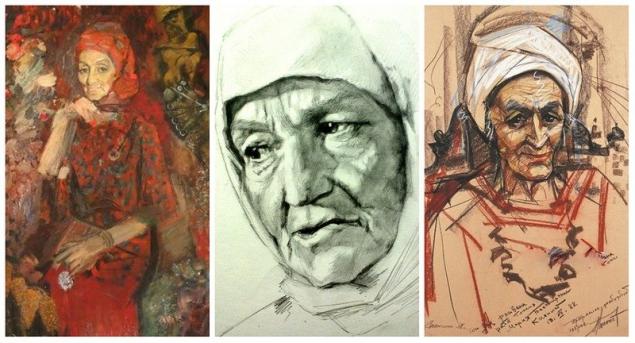
In the famous adventure film “Bronze Bird” Maria Kapnist appeared in the image of a mysterious, frightening Countess. In the fantastic comedy of Alexander Mayorov, “Chance” played the role of the high-society lady Milica Fedorovna.
Here are a dozen of the most famous films (more than 120 of them) with the participation of the actress.
Although Maria Kapnist jokingly called herself Baba Yaga and followed her image of a strange, even shocking woman, as a loud slap around the cynical world remember her wise words: “Do not laugh at the old age of a man whose youth you have not seen.”
In 1993, fate struck Maria Kapnist last blow. She was afraid of underground passages: after the terrible mines of Kazakhstan, she developed claustrophobia - fear of enclosed spaces, dungeons.
Irresistible fear was caused, for example, by underground passages. The car hit the 79-year-old actress on Victory Avenue in Kiev, near the Dovzhenko film studio. In the ambulance, her excellency said her last words: “It is not the driver’s fault...”
While treating her injuries, Maria Rostislavovna caught a cold and died on October 25, 1993 in a Kiev hospital from complications. The Countess was buried at the family cemetery in the village of Upper Obukhovka (Poltava region).

Kapnist never played her main role. But the most important role of Maria Rostislavovna was her life - she managed to come out victorious in the battle with the godless age, which never managed to anger her.
“Every moment of life lived is unique, invaluable. And although life has given me many difficult trials, I do not complain about my fate. To give strength to others is the greatest joy of life. Be kind. Remember that the best thing on earth is to do good.
These lines belong to Maria Rostislavovna Kapnist. Perhaps they can be called the testament of a talented actress, a strong and wise woman.
If you are interested in the difficult fate of our famous compatriots, pay attention to the article about Maria Gartung, the eldest and beloved daughter of Alexander Pushkin.
“100 years is an unseemly lot, but I still want to live ...” – said the famous singer Isabella Yuryeva. She was a symbol of the era, charmed men with her beauty, and conquered millions of hearts with her voice. We will tell you about the biography of this charming woman.

Few people know that Maria Kapnist’s appearance is a visual result of 15 years of hard labor in the Gulag, that her whole fate is almost from the first to the last steps – a severe ordeal, torture and torture.
Maria Kapnist Kapnisty (Kapnissi) is a Greek genus originating from the island of Zante (now it is the island of Zante). zakynthos). Glory representatives of this family gained at the Venetian service, and in 1702 the Doge of Venice Alvise II Mocenigo granted Stomatello Capnisi the count title.

Stomatello's grandson, Peter Khristoforovich fought with the Turks on the side of the Russian Emperor Peter I, settled in Ukraine and soon died. His son Vasily also became a military colonel of the Mirgorod regiment and a foreman, and he wrote his surname as Kapnist. He became famous in the battles near Ochakov in 1737.

All Kapnists adequately corresponded to the motto on their family coat of arms: "In the fire, unshakable." Among them were the commanders of the Cossack troops, Decembrists, public figures, and Vasily Kapnyst went down in history as a great poet and playwright.
On the maternal side, Maria Rostislavovna is genetically related to the most famous genera: the Apostles, the Golenishchev-Kutuzovs, the famous Zaporozhye ataman Ivan Sirko and the Ukrainian hetman Polubotsky.
Childhood and youth Maria Rostislavovna Kapnist She was born on March 22, 1914. The beginning of her life was the envy of everyone. Father Rostislav Rostislavovich Kapnist is a count, a rich man, a prominent figure.

Mother Anastasia Dmitrievna, née Baydak, is a noble, beautiful woman who knew 18 languages! A luxurious mansion on the English Embankment in St. Petersburg, Fyodor Ivanovich Chaliapin himself is a family friend and a devoted mother admirer.
617862
Chaliapin first drew attention to the young Mirochka (what was the name of Maria Rostislavovna relatives and friends). He gave her vocal lessons and praised her first stage work in a home play. It seemed that life would be so measured and happy always.
Everything collapsed in 1917. Living in St. Petersburg became increasingly difficult, and the Kapnists moved to Sudak. Rostislav Kapnista in the winter of 1921 shot the punitive detachment of the Cheka.
Lisa, Maria's older sister, did not survive the death of her father - she died of a heart break. Anastasia Dmitrievna and other children hid in the ravines, the mansion was looted and destroyed.

A few years later, the Red Terror spread to the surviving family members. Crimean Tatars, who highly venerated Count Kapnist, helped his widow and daughter Masha escape from Sudak, providing them with national clothes. At the age of sixteen, Maria Kapnist returned to St. Petersburg (now Leningrad).
The patron of the mother was Sergey Mironovich Kirov. Mother gets a job, daughter gets an opportunity to learn. So Maria ends up in a theater studio. In Leningrad, she meets a former admirer of Lisa, an older sister, electrical engineer Georgy Kholodovsky, familiar from Sudak. An affair begins...

In December 1934, shots were fired at Smolny: Kirov was killed. There are rampant arrests in town. Fate first throws Maria Kapnist to Kiev, then to Batumi. And here's the first arrest: August 27, 1941, sentence - 8 years of camps. A real hell has begun...
Arrested as an “unreliable element” (as it was of a noble family), Kapnist went through many of the most terrible camps for 15 years: from the hot sands of Karaganda to the frozen steppes of Taishet.

The Gulag is not the castle of If. It's hard labor. It's hunger. It's humiliation. Every day she was lowered in a barrel in a coal mine for 60 meters. But neither the daily grueling work, nor the constant beatings, nor the harassment of the camp commander, broke her will.
She later recalled, "Stages, transfers, camps." They never told me where they were going, so they asked themselves. Forever in memory the stage from the Karaganda camp in Dzhezkazgan. Desert. Scorching sun. Strong wind with sand. People died like flies. Everyone was thirsty. Dzhezkazgan was almost the most terrible place. Coal mining. In the morning they went down to the mine, climbed at night. The hands and leg suffered unbearably.”
To survive in these terrible conditions Maria Rostislavovna helped her heart friend Georgy Kholodovsky. Wherever she was, he found her and sent parcels of breadcrumbs, dried fruit, onions, saving her from hunger and scurvy.
And every year on her birthday, March 22, the old Russian holiday - Lark Day, she received her traditional, beloved from childhood gift - larks baked from pastry.
When the guards learned of the prisoner’s pregnancy, they were forced to have an abortion. Mary flatly refused. Bullying was pouring in. She had her teeth knocked out so she wouldn't bite. Doused with cold water and left in the cold. But nothing helped – in 1950 in the camp, Maria Kapnist gave birth to a daughter Radislava.
Who became her father remained a mystery. Having given birth to a child, Maria received no favors from the guards. On the contrary, the situation has worsened. I had to work harder. Already on the settlement had to load heavy boxes, posing as a man. One day she could not stand it and lost consciousness. After that, Mary made life easier. Rada was assigned to kindergarten.

The long-awaited and suffering daughter Mary protected as best she could. And the second term - ten years - was for hitting a kindergarten teacher who abused her two-year-old child. Meanwhile, the little Rada was sent to the Krasnoyarsk orphanage.
Kapnist was in a new prison and there went on a hunger strike, demanding that she give the child. She endlessly sent inquiries about her daughter's whereabouts, but each time she was taken to another camp.
To survive Maria helped friendship with Valentina Ivanovna Bazavluk, which she met in one of the camps. The friends agreed that which of them will be released first, she will find Radislava.
In 1956, Maria Kapnist found freedom. George Evgenievich met her with a beautiful bouquet at the station. I didn't. She was 44 years old and looked like an old woman.
The scene was terrible, tragic. He and she rushed along the already empty platform, in the end Kholodovsky handed Maria Kapnist a bouquet with the words: “You were not met, and I did not meet the one I was waiting for.” Turned around, walked away. Maria Rostislavovna called him. It was a shock...

George simply did not recognize the wrinkled gray-haired woman as his Mary, the Mary to whom he sent parcels every month for so many years, trying to somehow ease the camp life. His expression, when he finally realized who was in front of him, Maria Rostislavovna remembered for life. They remained friends, but nothing more.
The daughter, whom Valentina Ivanovna found and took to her, did not accept her mother. I didn’t know why my mom wasn’t there so long. She already had a mother, Valentina Ivanovna.
In a moment of despair, Maria Rostislavovna once wrote: “I experienced such terrible camps, but I experienced more terrible torture when I met my daughter, who did not want to recognize me.”

There was a warming between the mother and daughter. Rada said: The first time I came to my mother, when I was 15 years old, and was on her birthday. It was there that I first felt what kind of person she was, how people loved her.

There was an extraordinary atmosphere that she created. She always had a lot of people of different ages and professions. As soon as she came in, it was as if a fresh wind were flying in and an amazing conversation began.
After 15 years of camps and transfers, Maria Kapnist arrived in Kiev. Life had to start from scratch. There was nowhere to live, and she spent the night in train stations, in squares, telephone booths. To get at least some money, she worked as a masseur, a janitor. About the scene and filming in the cinema I did not even dream.
After the camp ordeal, Maria Rostislavovna in her 44 years looked at all 70. This helped her get her first role. She was standing in a casket near the box office of the Dovzhenko cinema, a young director Yuri Lysenko ran up and with the words: “What film do you star in?” – dragged the picture “Tavria” to the set.

The success of this debut work drew the attention of many directors of the Dovzhenko film studio. They were delighted with her expressive appearance and filled with offers to play aristocrats, nuns, witches. Predatory profile, arrogant look and old-fashioned manners - all this invariably caught the viewer's eye.

Later she became known for her characteristic images - countesses, ladies, mysterious old women, gypsies and sorcerers. In "The New Adventures of the Yankees at the Court of King Arthur", she generally performed three roles at once - Fatum, a knight and an abbess.

In the famous adventure film “Bronze Bird” Maria Kapnist appeared in the image of a mysterious, frightening Countess. In the fantastic comedy of Alexander Mayorov, “Chance” played the role of the high-society lady Milica Fedorovna.
Here are a dozen of the most famous films (more than 120 of them) with the participation of the actress.
- "Ivanna" (1959)
- The Missing Letter (1972)
- Ruslan and Lyudmila (1972)
- The Bronze Bird (1974)
- "Tabor Goes to Heaven" (1976)
- The Wild Hunt of King Stach (1979)
- "Gypsies" (1979)
- Farewell, Zamoskvoretskaya Stupid... (1987)
- New Adventures of the Yankees at the Court of King Arthur (1988)
- Hearts of Three (1992)
Although Maria Kapnist jokingly called herself Baba Yaga and followed her image of a strange, even shocking woman, as a loud slap around the cynical world remember her wise words: “Do not laugh at the old age of a man whose youth you have not seen.”
In 1993, fate struck Maria Kapnist last blow. She was afraid of underground passages: after the terrible mines of Kazakhstan, she developed claustrophobia - fear of enclosed spaces, dungeons.
Irresistible fear was caused, for example, by underground passages. The car hit the 79-year-old actress on Victory Avenue in Kiev, near the Dovzhenko film studio. In the ambulance, her excellency said her last words: “It is not the driver’s fault...”
While treating her injuries, Maria Rostislavovna caught a cold and died on October 25, 1993 in a Kiev hospital from complications. The Countess was buried at the family cemetery in the village of Upper Obukhovka (Poltava region).

Kapnist never played her main role. But the most important role of Maria Rostislavovna was her life - she managed to come out victorious in the battle with the godless age, which never managed to anger her.
“Every moment of life lived is unique, invaluable. And although life has given me many difficult trials, I do not complain about my fate. To give strength to others is the greatest joy of life. Be kind. Remember that the best thing on earth is to do good.
These lines belong to Maria Rostislavovna Kapnist. Perhaps they can be called the testament of a talented actress, a strong and wise woman.
If you are interested in the difficult fate of our famous compatriots, pay attention to the article about Maria Gartung, the eldest and beloved daughter of Alexander Pushkin.
“100 years is an unseemly lot, but I still want to live ...” – said the famous singer Isabella Yuryeva. She was a symbol of the era, charmed men with her beauty, and conquered millions of hearts with her voice. We will tell you about the biography of this charming woman.
How to make chocolate cake without baking
Famous fashion houses: “To look stylish and bright in 2018, choose things with...”


